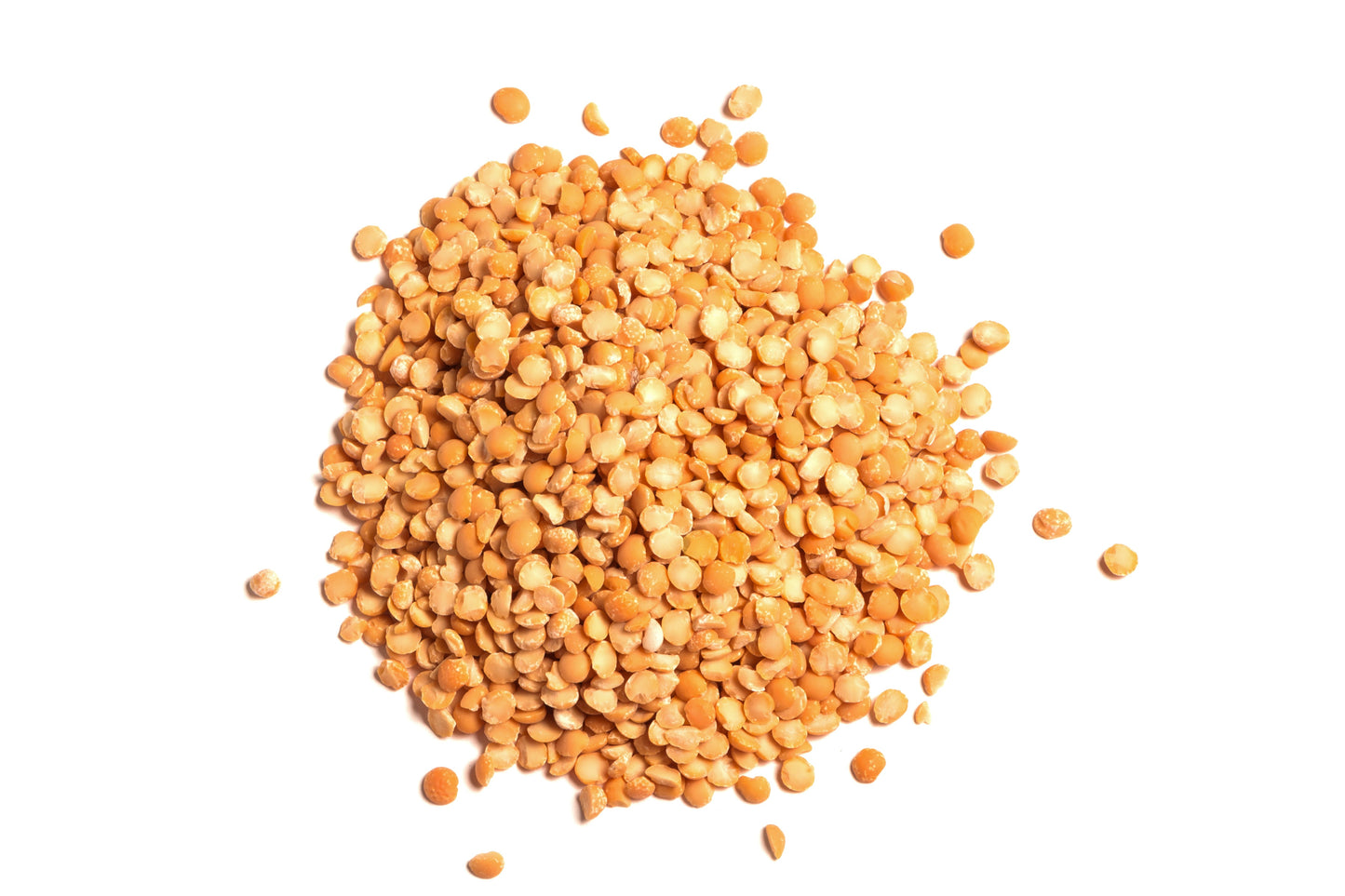
There are plenty of myths about pea protein making rounds on the internet. Let’s put these myths to rest so that you can enjoy your Growing Naturals pea protein powder. Here’s the science-based truth about pea protein:
1. Myth: Pea protein is made from sweet green peas.
Truth: It is actually made from field peas, which are the dry kind you make split pea soup with. These come in green and yellow varieties. Field peas are naturally higher in protein (20-25%) than sweet peas (5-6%)—so it’s easier (and less wasteful) to make a protein powder from something that is already pretty high in protein.
2. Myth: Pea protein is the same as ground up peas, or pea flour.
Truth: Pea protein is not the same as ground up split peas. Most of the starch and fiber content is removed to make pea protein concentrate, so it is not nutritionally the same as eating yellow peas. It’s more like a high protein, very low-carb version of split peas. Plain pea protein is about 80% protein and <20% starch and fat, whereas split peas are only about 23% protein and <80% starch and fat. At GN, we then take this pea protein and add some flavoring and sweetener, but leave it as is for the Original version.
3. Myth: Pea protein is made with chemicals.
Truth: Some companies do use chemical solvents like hexane to extract the protein from vegetables like yellow peas. The pea protein used for GN products is made using only water and a mechanical process to remove most of the starch and fiber content, leaving the concentrated, chemical-free, protein powder behind.
4. Myth: Pea protein is NOT easily digested or usable by the body.
Truth: Contrary to what some may believe, pea protein is just as usable and maybe even better digested than the protein from whole split peas. This is because the protein powder contains significantly less fiber than whole peas which can interfere with digestion and absorption of the protein. Plus, we’ve third party lab-tested our GN pea protein to determine it has 100% digestibility.
5. Myth: Heating or cooking destroys pea protein.
Truth: While heating or cooking, may certainly “denature” any protein, it does not mean that the protein content magically disappears. ‘Denaturing’ of protein simply means that the chemical structure has changed, such as when a raw egg turns solid with heat. The cooked egg still has protein in it. This is different than overcooking or burning the protein, which can definitely render it nutritionally obsolete. So feel free to add pea protein to your next batch of casserole, hot cereal or muffins.
6. Myth: Pea protein contains artificial sweeteners.
While some companies may use artificial sweeteners to sweeten pea protein, rest assured Growing Naturals uses only natural sweeteners to sweeten our protein powders. The flavored pea proteins use organic coconut sugar and stevia while the unflavored pea protein does not contain any sweetener.
7. Myth: Pea protein is only for vegans and vegetarians.
Truth: You don’t have to be a vegan or vegetarian to consume pea protein. It’s simply an alternate, allergen-friendly and plant-based source to other protein powders on the market like dairy, egg and soy based ones. Many environmentally conscious individuals are swapping some animal-based protein for plant-based pea protein in their diets.
8. Myth: Pea protein is high in carbs or sugar.
Truth: 1 cup of cooked split peas has about 16g of protein and 41 grams of carbs that come with it. GN pea protein only contains <4 grams of carbs (depending on the flavor) and 15 grams of protein per serving. This is because our GN pea protein supplements are made with a pea protein concentrate, which has had most of the starch content in the peas removed. Then we flavor it and make it delicious. Other brands may be higher in carbs or sugar because of more added ingredients.
9. Myth: Pea protein is ‘incomplete protein’ and does NOT count towards your daily protein requirements.
Truth: In terms of the amino acids supplied to your body, eating pea protein is much like eating the protein from a bowl of cooked beans, a handful of edamame or even hummus. Like other legume-based proteins, it is low in cystine and methionine and high in lysine and therefore considered an ‘incomplete protein.’ It needs to be combined with complementary protein sources which are high in cystine and methionine such as from grain-based foods. This doesn’t mean it doesn’t count toward your daily protein needs, especially if (like most Westerners) your diet is lush and varied. According to the CDC and Academy of Nutrition & Dietetics, complementary proteins do not have to be consumed in one meal; they can be eaten separately throughout the day.
10. Myth: Pea protein can’t build or maintain your muscle mass.
Truth: Despite it being plant-based, as an alternate source of dietary protein, GN pea protein can be used to help fill protein needs and help build or maintain muscles. It should be mixed with grain-based protein sources throughout the day so that the body can obtain the necessary amino acids to rebuild tissue like hair, skin, nails and even muscles.
11. Myth: Pea protein is harmful to kidneys.
Truth: This myth stems from the idea that protein powders are too much protein for the kidneys to handle. If that were the case, then steak, turkey and fish would also be too much for the kidneys. Kidneys are remarkable organs which filter the by-products of any protein digestion. One of the by-products being ammonia, which is excreted in urine. Unless there is a pre-existing kidney condition, eating/drinking pea protein within your individual needs will not damage the kidneys. On the other hand, consuming excessive amounts of protein (way more than your body needs), may be too stressful on the kidneys because they can only work so fast!
12. Myth: Pea protein is harsh on your digestive system.
Truth: Among other things, lactose, gluten and FODMAPs are major causes of stomach distress for many. Aside from being allergen-friendly, GN pea protein is devoid of all these known stomach stressors. We have tested our GN pea protein for FODMAPs and found that it is considered low-FODMAP at less than 2 scoops (30g protein) per day. Other products made with pea protein should be checked individually for added ingredients, although many are catered to sensitive stomachs.
13. Myth: Pea protein, like other protein powders, contains MSG.
Truth: This myth stems from the idea that the process to make protein powder from peas breaks the amino acids apart (hydrolyze) and magically converts one of the amino acids (glutamic acid) into monosodium glutamate. Not only is this not true, but none of the GN proteins are made with hydrolyzed proteins so we know there is no MSG in them. But just to prove it, we have also lab-verified the lack of MSG in our products.
14. Myth: Pea protein causes inflammation and hormone imbalance.
Truth: Unless there is an allergy to peas or a pre-existing condition, this naturally processed pea protein concentrate used for GN pea protein is more likely to be anti-inflammatory compared to animal proteins, since it plant-based and very low in fat. Additionally GN pea protein does not contain any artificial ingredients. Since some hormones are made from amino acids, consuming enough dietary protein actually helps to stabilize hormones, not disrupt them. Not getting enough protein is more likely to cause hormone imbalance.
By: Scarlett Full, in-house Registered Dietitian
